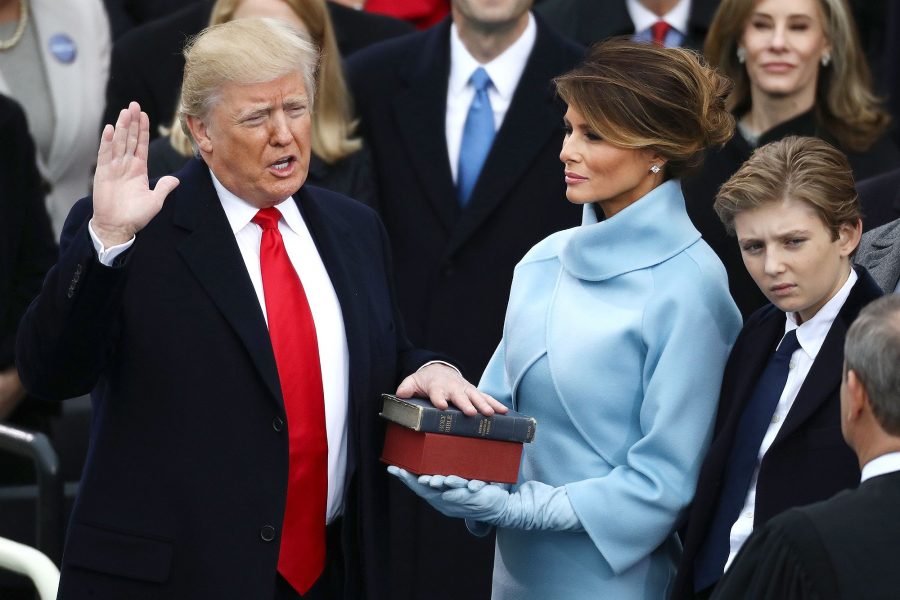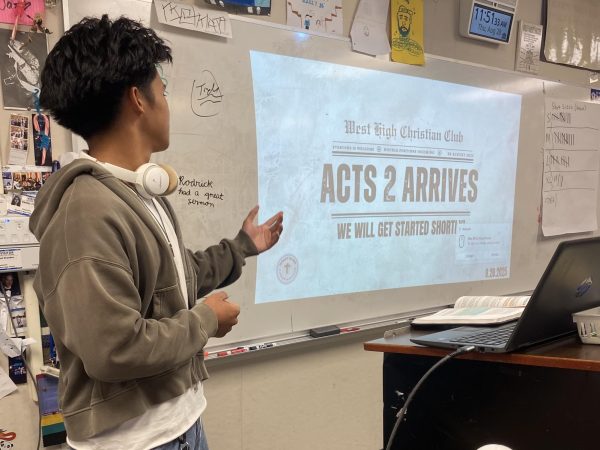Controversy over Trump’s inauguration continues to grow
U.S. President-elect Donald Trump takes the oath of office as First Lady-elect Melania Trump stands during the 58th presidential inauguration in Washington, D.C., U.S., on Friday, Jan. 20, 2017. Donald Trump will become the 45th president of the United States today. Photographer: Andrew Harrer/Bloomberg via Getty Images
On January 20, Donald J. Trump was inaugurated as the 45th president of the United States. Moments later, he addressed the citizens of America, promising to restore economic power to the people.
“From this day forward,” President Trump said, “a new vision will govern our land. From this day forward, it’s going to be only America first.” He proposed new jobs, stronger borders and an enforcement of stricter foreign policies, all in efforts to bring government focus back to American families.
Trump has also mentioned numerous times his plans to repeal Obamacare, calling The Affordable Care Act implemented by former President Barack Obama, as an “economic burden” on the people of America. In his Inauguration Speech, Trump promised, “we will get our people off of welfare and back to work rebuilding our country with American hands and American labor.”
Only a few hours after speaking those words, Trump sat down to sign his first executive order to limit aspects of Obamacare. Though this does not erase Obamacare, through vague language Trump encouraged healthcare agencies to begin relief efforts toward dismantling The Affordable Care Act.
Within his speech, President Trump also attempted to inspire a sense of unification throughout American citizens saying, “When you open your heart to patriotism, there is no room for prejudice.”
However, Trump’s words did not stop protesters in downtown Washington following his inauguration, as storefronts were smashed, rocks were thrown at police and vehicles were set on fire. With the intention of protecting private property and maintaining the safety of the general public, officers responded accordingly, dressed in riot gear and using tear gas and flash-bang grenades to disperse the crowd.
But these protests were not to be the last of this weekend. An estimated 470,000 people marched to Washington on behalf of Women’s Rights and in protest against the inauguration of President Trump. Similar nonviolent movements were seen across the US in cities such as Los Angeles, Chicago and New York. Women marched in sister marches overseas as well, as seen in London, England and Sydney, Australia.
According to their website, the Women’s March intended to “send a bold message to our new government on their first day in office, and to the world that women’s rights are human rights.” This encompasses a community of “immigrants of all statuses, Muslims and those of diverse religious faiths, people who identify as LGBTQIA, Native people, Black and Brown people, people with disabilities [and] survivors of sexual assault.”
Senior Madeleine Alt attended a sister Women’s March in San Francisco on January 21. “I feel that it’s important to support women of all races and sexualities, and in light of Trump’s election the march holds much significance,” Alt said. “I hope these marches will influence people to speak up for our fellow citizens who suffer discrimination. After all, silence doesn’t effect change.”





